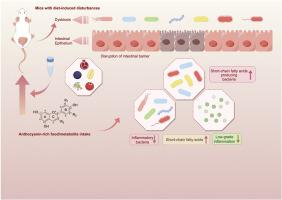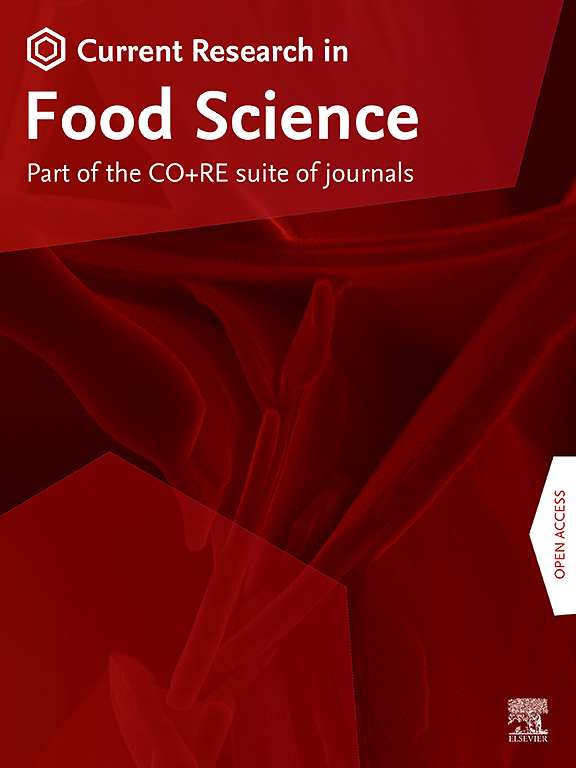Unveiling the multifaceted roles of anthocyanins: a review of their bioavailability, impacts on gut and system health, and industrial implications
IF 7
2区 农林科学
Q1 FOOD SCIENCE & TECHNOLOGY
引用次数: 0
Abstract
Anthocyanins, a class of flavonoids abundant in many fruits and vegetables, undergo complex catabolism, forming bioactive metabolites that profoundly affect a range of host physiological processes, including anti-inflammatory effects, modulation of oxidative stress, and modulation of the intestinal barrier. Despite this, the low bioavailability of anthocyanins presents challenges for their metabolic efficacy, health benefits, and therapeutic engagement in vivo. Therefore, the multifaceted roles of structurally diverse anthocyanins from different sources and the interplay between anthocyanin bioavailability and gut and systemic health were analyzed in depth. Additionally, we discuss how the dynamic gut microbial communities, i.e., growth/inhibition of certain microbial species, are regulated in diverse pathology models and the implications for anthocyanin metabolism and bioactivity in the context of gut and system health. A comprehensive analysis of the physicochemical factors affecting anthocyanin bioavailability and molecular mechanisms across disease models is undertaken. We further propose prospective techniques to enhance bioavailability, such as encapsulation, biotransformation, and omics-driven stratification of responder populations, as well as actionable insights for industry applications, including tailored food matrix design such as protein-polyphenol complexes, prebiotic co-delivery systems, and personalized nutrition strategies leveraging gut microbiota modulation. Ultimately, we advocate high-throughput analysis coupled with computational approaches such as AI-driven predictive modeling of anthocyanin-microbiota interactions to elucidate structure-activity relationships. These strategies are critical for determining whether observed health effects are attributable to anthocyanins per se or their synergistic/context-dependent actions, essential for enhancing bioavailability and therapeutic applications, thereby enabling rational dietary inclusion and therapeutic translation.

揭示花青素的多方面作用:综述其生物利用度,对肠道和系统健康的影响,以及工业意义
花青素是一类富含多种水果和蔬菜的类黄酮,经过复杂的分解代谢,形成生物活性代谢物,深刻影响宿主的一系列生理过程,包括抗炎作用、氧化应激调节和肠道屏障调节。尽管如此,花青素的低生物利用度对其体内代谢功效、健康益处和治疗作用提出了挑战。因此,本文深入分析了不同来源花青素结构多样性的多方面作用,以及花青素生物利用度与肠道和系统健康之间的相互作用。此外,我们讨论了动态肠道微生物群落,即某些微生物物种的生长/抑制,如何在不同病理模型中受到调节,以及肠道和系统健康背景下花青素代谢和生物活性的影响。综合分析了影响花青素生物利用度的理化因素和跨疾病模型的分子机制。我们进一步提出了提高生物利用度的前瞻性技术,如胶囊化、生物转化和响应人群的组学驱动分层,以及可用于工业应用的可操作见解,包括定制食品基质设计,如蛋白质-多酚复合物、益生元共递送系统和利用肠道微生物群调节的个性化营养策略。最后,我们提倡高通量分析与人工智能驱动的花青素-微生物群相互作用预测建模等计算方法相结合,以阐明结构-活性关系。这些策略对于确定所观察到的健康效应是否归因于花青素本身或其协同/环境依赖作用至关重要,对于提高生物利用度和治疗应用至关重要,从而实现合理的饮食纳入和治疗转化。
本文章由计算机程序翻译,如有差异,请以英文原文为准。
求助全文
约1分钟内获得全文
求助全文
来源期刊

Current Research in Food Science
Agricultural and Biological Sciences-Food Science
CiteScore
7.40
自引率
3.20%
发文量
232
审稿时长
84 days
期刊介绍:
Current Research in Food Science is an international peer-reviewed journal dedicated to advancing the breadth of knowledge in the field of food science. It serves as a platform for publishing original research articles and short communications that encompass a wide array of topics, including food chemistry, physics, microbiology, nutrition, nutraceuticals, process and package engineering, materials science, food sustainability, and food security. By covering these diverse areas, the journal aims to provide a comprehensive source of the latest scientific findings and technological advancements that are shaping the future of the food industry. The journal's scope is designed to address the multidisciplinary nature of food science, reflecting its commitment to promoting innovation and ensuring the safety and quality of the food supply.
 求助内容:
求助内容: 应助结果提醒方式:
应助结果提醒方式:


